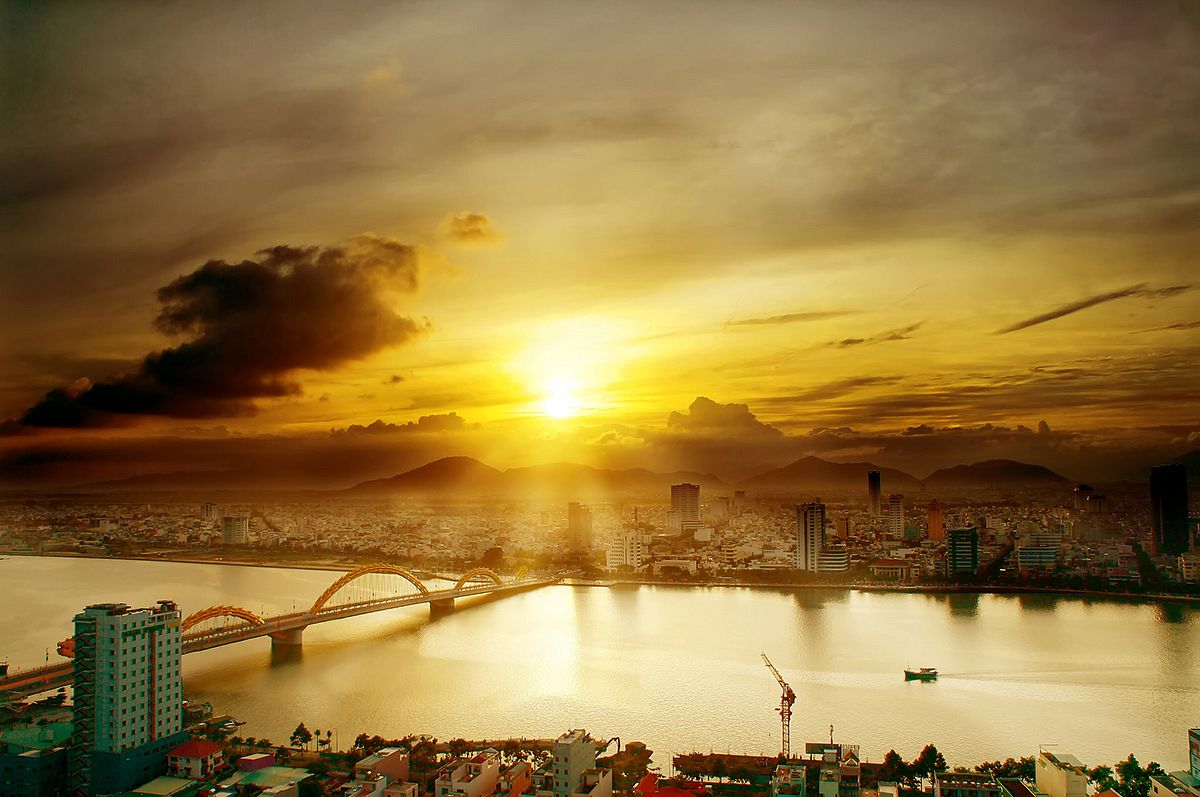If you've driven along Ton Duc Thang any time in the last week or so, you might have noticed the large corrugated partition that's gone up just south of Le Thanh Ton. As the area overlooking the Saigon River begins to transform – whether through the construction of the highly-anticipated Thu Thiem 2 Bridge or as a stop on the city's first metro line – one thing is certain: Saigon's historic Ba Son Shipyard is about to undergo some major changes.
While development projects are clearly afoot in the area around the shipyard, the largest construction effort is still in limbo, as South Korean company EUNSAN awaits approval on its US$5 billion bid to revamp Ba Son with a modern mixed-use complex.
The modernization of Ba Son is a sore spot for some local residents, as its colonial buildings and shipbuilding complex play an important role in the city's maritime history, dating back to the turn of the 19th century, when Nguyen Phuc Anh – who later became Gia Long, first emperor of the Nguyen dynasty – set up the port for defense purposes.
While Ba Son has since been recognized by the Ministry of Culture and Information as a ational historic monument, this does not protect the shipyard's history from being erased. As the fate of Ba Son hangs in the balance, many are pushing for the development of the shipyard to take a different path.
In a survey by Tuoi Tre, Nguoi Do Thi reports, over half of respondents preferred to see the site turn into a park or green space, while 39% wished for both a park and cultural area open to the public. Only 9% of the survey's participants were behind the construction of a shopping mall, office building or apartment block.
Several prominent members of the city's historical community, too, believe there's more value in the preservation of the space than there is in enacting new development projects. Here's what four local experts have to say on the matter:
Le Tu Cam, chairwoman of the HCMC Cultural Heritage Organization
I still wish that the Ba Son area would become a cultural-historical complex. It's an ideal destination for river tours of the city. It would offer a marine technology institute and a maritime museum combined with historical workshops, a memorial for President Ton Duc Thang and the shipyard's historical dry docks. I'd also like to build a new Ton Duc Thang Museum in that cultural-historical complex so that it's close to the other sites and can promote the full value and conservation of the space.
Tran Xuan Thao, director of the Ton Duc Thang Museum
When it comes to the [Ton Duc Thang] museum and Ba Son, many generations of people who have worked at the museum have dreamed of opening a cultural and historical site there for everyone. Nothing would be better than if Ba Son became a cultural-historical park along the Saigon River. We are always ready to move the location of the modern museum to be next to this historical space.
Ngo Long Minh, former CEO of Ba Son
The historical value of Ba Son is indispensable to Saigon. This isn't just an environmental, scenic, cultural or historical issue; Ba Son has also played a vital role in national security and defense. Although the city has implemented plans and developed construction projects here, there is still no reason not to keep Ba Son, especially as a science and technology center for shipbuilding and repair. The shipyard could become the headquarters for all shipbuilding corporations across the country.
Professor Luu Tran Tieu, chairman of the Vietnam Cultural Heritage Organization and National Heritage Council
Regarding the Ba Son issue, the Vietnam Cultural Heritage Organization wrote a proposal to the HCMC People's Committee and the Department of Culture, Sports and Tourism later submitted that proposal to the prime minister for consideration, aiming to secure Ba Son Shipyard, the large dry docks and all of the associated heritage sites in the area as a nationally-recognized historical site.
From the Vietnam Cultural Heritage Organization's 2012 proposal:
“Ba Son Shipyard, the large dry dock and all of the heritage sites associated relics in the area need to be protected, preserved and restored in order to embrace the historical and cultural value of the site for Saigon and the entire country. For the Ba Son Shipyard, in principle, we must preserve all of its original elements, both inside and out. In cases where it is not possible to preserve the original elements of the area, it is possible to practice “adaptive conservation” as other countries have done. This means using the spaces within the complex which cannot be restored as museum displays, provided conditions do not harm the existing architecture.”














